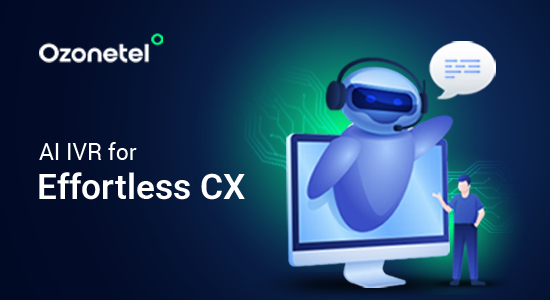- Resources
- The Definitive Guide to Call Center Optimization
The Definitive Guide to Call Center Optimization

Your call center is at the frontline of your customer service operations. It’s where you address frustrated callers, solve their problems, and turn them into brand advocates. But let’s face it, running a call center efficiently and successfully is easier said than done. It requires smart planning and a careful balance between operational efficiency and customer satisfaction. That’s where call center optimization comes in.
It’s not just about cutting costs. It’s about creating an experience that delights your customers, keeps your agents motivated, and helps your business grow.
With the right optimization strategies, this can be your call center reality. And in this article, we’ll explore these strategies in detail, helping you create a call center that not only meets but exceeds expectations. Read along!
What is Call Center Optimization?
Call center optimization is a strategic approach aimed at enhancing the efficiency, effectiveness, and overall performance of your customer service operations. It’s about transforming your organization into a streamlined, customer-focused center that not only meets but exceeds expectations.
Essentially, call center optimization seeks to achieve three primary objectives – boosting customer satisfaction, elevating operational efficiency, and reducing operational costs. Moreover, to effectively optimize your call center, you should consider implementing the following key features and tools:
- Intelligent Call Routing: This feature ensures that callers are connected to the right person quickly, reducing wait times and improving first-call resolution rates.
- AI-Powered Analytics: This tool can provide invaluable insights into customer behavior, common issues, and emerging trends. Use these insights to proactively address customer needs, refine your services, and train your agents more effectively.
- Customer Satisfaction (CSAT) Surveys: These surveys provide direct insights into customer experiences and help you identify areas for improvement.
- Real-Time Dashboards: These dashboards give you an at-a-glance view of your call center’s performance, allowing you to make quick, informed decisions to optimize operations.
- Post-Call Analytics: This feature allows you to analyze call durations, resolution rates, and customer sentiment for specific interactions or across your entire operation.
- In-Queue Callbacks: This feature significantly improves the customer experience by respecting their time and giving them more control over their interaction with your call center.
Call Center Challenges In 2024

Before we get into learning more about call center optimization, it’s essential to understand and address the challenges that are developing in this sector. Some of these include:
Upgrading Technology
You’re likely facing the complex task of integrating cutting-edge tools like artificial intelligence (AI), chatbots, and advanced analytics into your existing systems. While these technologies offer tremendous potential to enhance efficiency and service quality, implementing them can be a daunting process.
The challenge lies not just in selecting the right technologies but also in seamlessly incorporating them into your current infrastructure. You’ll need to consider factors such as compatibility with existing systems, scalability, and the learning curve for your agents. Moreover, the cost of these upgrades can be substantial, requiring careful budgeting and ROI analysis.
Maintaining Customer Satisfaction
Your customers demand quick, personalized, and effective solutions to their issues across multiple channels. They expect seamless experiences whether they’re interacting with you via phone, email, chat, or social media.
To optimize customer satisfaction, you need to adopt a holistic approach. Start by deeply understanding your customers’ needs and preferences. Then, use data analytics to gain insights into common pain points and areas for improvement.
Managing High Call Volumes
With over half of contact centers experiencing increased phone calls from 2022 to 2023, efficiently managing this influx is crucial for maintaining service quality and agent morale. To optimize your approach to high call volumes, consider implementing intelligent call routing systems that direct customers to the most appropriate agent based on their needs and the agent’s expertise.
Agent Burnout and Turnover
With 88% of agents reporting burnout as a major issue and turnover rates reaching 38%, addressing this challenge is crucial for maintaining a stable, experienced workforce.
To optimize your call center in this area, focus on creating a supportive work environment that prioritizes agent well-being. Also, implement regular breaks, offer flexible scheduling options, and provide opportunities for skill development and career advancement.
Low Contact Rates
For call centers engaged in outbound calling, declining contact rates pose a significant challenge. This issue is partly due to changing consumer behaviors and the increasing prevalence of call blocking and flagging systems designed to combat spam.
To optimize your outbound calling strategy, focus on improving the quality and targeting of your calls. Additionally, implement advanced predictive dialing systems that can identify the best times to reach specific customer segments.
Metrics Related To Call Center Optimization

By tracking key metrics, you can identify areas for improvement and make data-driven decisions to enhance your call center’s effectiveness. Let’s explore some essential metrics that can help you optimize your call center operations.
First Call Resolution (FCR)
FCR measures the percentage of customer issues resolved during the first contact. A higher FCR indicates that your agents are efficiently resolving customer problems, leading to increased satisfaction and reduced operational costs.
By focusing on improving FCR, you can streamline your service delivery and minimize the need for follow-up calls. To calculate FCR, use this formula:
FCR = (Number of issues resolved on first contact / Total number of issues) × 100
Average Handling Time (AHT)
AHT measures the average duration of a customer interaction, including talk time, hold time, and after-call work. A lower AHT suggests that your agents are handling calls efficiently. However, it’s important to balance speed with quality to ensure customer satisfaction.
By analyzing AHT, you can identify opportunities to optimize your call handling processes and provide additional training to your agents. Calculate AHT using this formula:
AHT = (Talk time + Hold or wait durations + After-call work time) / Total number of calls handled
Service Level Agreement (SLA) Compliance
SLA compliance measures the percentage of customer interactions handled within the agreed-upon timeframe. High SLA compliance indicates that you’re meeting customer expectations and contractual obligations.
By monitoring this metric, you can ensure that your call center is delivering timely responses and resolutions, ultimately leading to improved customer satisfaction. Use this formula to calculate your service level:
Service level = (Number of interactions handled within SLA / Total number of interactions) × 100
Customer Satisfaction (CSAT) Score
CSAT measures customer satisfaction based on feedback following interactions with your call center. A high CSAT score suggests that your customers are having positive experiences with your call center.
Regularly tracking CSAT allows you to identify areas for improvement and make necessary adjustments to enhance your service quality. Calculate CSAT using this formula:
CSAT = (Number of satisfied customers / Total number of survey responses) × 100
Net Promoter Score (NPS)
NPS measures customer loyalty and likelihood to recommend your company. A higher NPS indicates stronger customer loyalty and advocacy. By monitoring NPS, you can gauge the overall impact of your call center’s performance on customer perception and loyalty.
It’s calculated based on responses to the question: “How likely are you to recommend our company to a friend or colleague?”
NPS = % of Promoters (customers who rate 9-10) – % of Detractors (customers who rate 0-6)
Abandonment Rate
The abandonment rate represents the percentage of calls terminated by customers before reaching an agent. A high abandonment rate may indicate long wait times or inefficient call routing.
By tracking this metric, you can identify peak periods of customer frustration and take steps to improve your call handling processes. Calculate it using this formula:
Abandonment rate = (Number of abandoned calls / Total number of incoming calls) × 100
Average Speed of Answer (ASA)
ASA measures the average time customers wait in the queue before an agent answers their call. Monitoring ASA helps you identify bottlenecks in call routing and staffing shortages.
By optimizing this metric, you can reduce customer wait times and improve overall service levels. Use this formula to calculate ASA:
ASA = Total wait time for all calls / Total number of answered calls
Occupancy Rate
The occupancy rate measures the percentage of time agents spend actively handling customer interactions or performing related tasks. A higher occupancy rate suggests optimal agent time and resource utilization.
By tracking this metric, you can maximize productivity and operational efficiency in your call center. Calculate it using this formula:
Occupancy rate = (Total active time / Total available time) × 100
Agent Utilization Rate
The agent utilization rate measures the percentage of time agents spend handling customer interactions compared to idle time or non-productive activities. A higher utilization rate indicates better agent performance and compliance with operational guidelines.
By monitoring this metric, you can identify opportunities to improve agent productivity and ensure that your workforce is being used effectively. Use this formula to calculate it:
Agent utilization rate = (Actual working time / Scheduled working time) × 100
Effective Strategies For Call Center Optimization
Now that you are aware of the many benefits call center optimization brings to your organization, let’s explore some key strategies that can help you transform your call center into a high-performing, customer-centric operation.
Integrate All Customer Communication Channels
Customers, today, expect to reach you through various channels. By adopting an omnichannel approach, you can create a seamless experience across phone, email, social media, webchat, and in-app messaging. Invest in software that integrates these channels into a single platform, allowing your agents to manage interactions efficiently. This integration not only simplifies your agents’ workflow but also ensures consistent service quality across all touchpoints.
Empower Agents with Customer Information
Equip your agents with a robust Customer Relationship Management (CRM) system that provides instant access to customer details, interaction history, and previous requests. This information empowers your agents to provide personalized, context-aware service, reducing the need for customers to repeat themselves and speeding up issue resolution. The result? Happier customers and more productive agents.
Leverage Speech Analytics
Advanced speech analytics can interpret tone, vocabulary, and speech patterns to gauge customer sentiment and satisfaction levels. This valuable insight can help you identify trends, improve agent training, and enhance your call routing strategies. By understanding the emotional context of calls, you can better prepare your agents to handle various situations effectively.
Implement Intelligent Call Routing
Move beyond basic Interactive Voice Response (IVR) systems and embrace AI-powered call routing. These sophisticated systems use real-time data and machine learning algorithms to direct calls to the most suitable agent based on factors like expertise, previous interactions, and current availability. Intelligent routing increases the likelihood of first-call resolution, improving both customer satisfaction and operational efficiency.
Invest in Continuous Agent Coaching
Your agents are the backbone of your call center – provide them with ongoing training and coaching to keep their skills sharp and morale high. Utilize tools that offer real-time feedback and allow managers to listen in or join calls when needed. Regular coaching sessions help agents stay updated on best practices, product knowledge, and customer service techniques, ensuring they’re always prepared to deliver top-notch service.
Optimize Agent Performance
Focus on key performance indicators (KPIs) that truly reflect the quality of service your agents provide. Metrics like first-call resolution rate, average handling time, and customer satisfaction scores can give you a comprehensive view of agent performance. Use these insights to identify areas for improvement and recognize top performers. Remember, the goal is not just to handle calls quickly, but to resolve issues effectively and leave customers satisfied.
Enhance Quality of Service
Implement a robust quality management system to continuously monitor and improve your service standards. Regularly evaluate customer interactions across all channels to identify patterns and areas for improvement. Use these insights to refine your processes, update your knowledge base, and provide targeted training to your agents. By consistently focusing on quality, you can elevate your overall customer experience.
Optimize Workforce Management
Effective workforce management is key to balancing operational efficiency with excellent customer service. Use forecasting tools to predict call volumes and ensure you have the right number of agents available at the right times. Implement flexible scheduling options to accommodate peak hours and unexpected spikes in demand. By optimizing your workforce, you can reduce wait times, manage costs, and maintain high service levels.
Foster a Positive Work Environment
Create a supportive and engaging work atmosphere for your agents. Recognize and reward good performance, provide opportunities for career growth, and encourage open communication. A positive work environment not only boosts agent morale but also reduces turnover, leading to more experienced agents and better customer service. Remember, happy agents often translate to happy customers.
Conclude
Call center optimization is a continuous journey of refining your customer service operations to deliver exceptional experiences. By implementing strategies such as personalized service, empowered agents, reduced wait times, and seamless omnichannel interactions, you can transform your call center into a powerful asset that drives customer satisfaction and loyalty.
And as you start optimizing your call center, consider leveraging comprehensive solutions like Ozonetel’s CX hub. With its AI-powered automation, omnichannel routing capabilities, and deep CTI integrations, Ozonetel offers a robust platform to streamline your operations and elevate your customer experience. Start your 7-day free demo now!
Final thoughts
By choosing the right AI-powered solution, companies can significantly improve customer satisfaction, reduce operational costs, and gain valuable insights into their service performance. And as you decide on the AI call center software to deploy in your organization, consider Ozonetel’s comprehensive suite of AI-powered tools.
Ozonetel offers a robust platform that integrates seamlessly with your existing systems, providing advanced features like intelligent routing, sentiment analysis, and real-time agent assistance. With its user-friendly interface and quick
Want to see what Ozonetel can do for your company? Sign up today for a free 7-day trial.
Prashanth Kancherla
Chief Operating Officer, Ozonetel Communications
Over the past decade, Prashanth has worked with 3000+ customer experience and contact center leaders...
Chief Operating Officer, Ozonetel Communications
Over the past decade, Prashanth has worked with 3000+ customer experience and contact center leaders to comprehensively understand the need for effective and efficient customer communications at every step of their journey with a brand. Deeply embedded in today’s CCaaS ecosystem, he has been instrumental in Ozonetel's growth and contributed in various roles including product management, sales, and solution architecture.
Frequently Asked Questions
The digital experience (DX) is the collection of responses a user or consumer experiences when interacting with a company. This includes digital experience platforms such as the firm website, apps, social media, and chatbots. The goal is to use these digital resources to increase user happiness and create a great customer experience.
The five key components of digital experience are typically user experience design, content strategy and management, personalization and consumer insights, multichannel delivery, and technology and infrastructure. By strategically blending these components, businesses may create a seamless consumer contact that is both interesting and rewarding.
Some common emerging digital experience trends include voice commerce, hyper-personalization, AI-driven customer service and immersive technologies, such as augmented reality (AR) and virtual reality (VR). Adapting to these emerging digital trends will help you remain relevant and competitive in such a saturated market.







